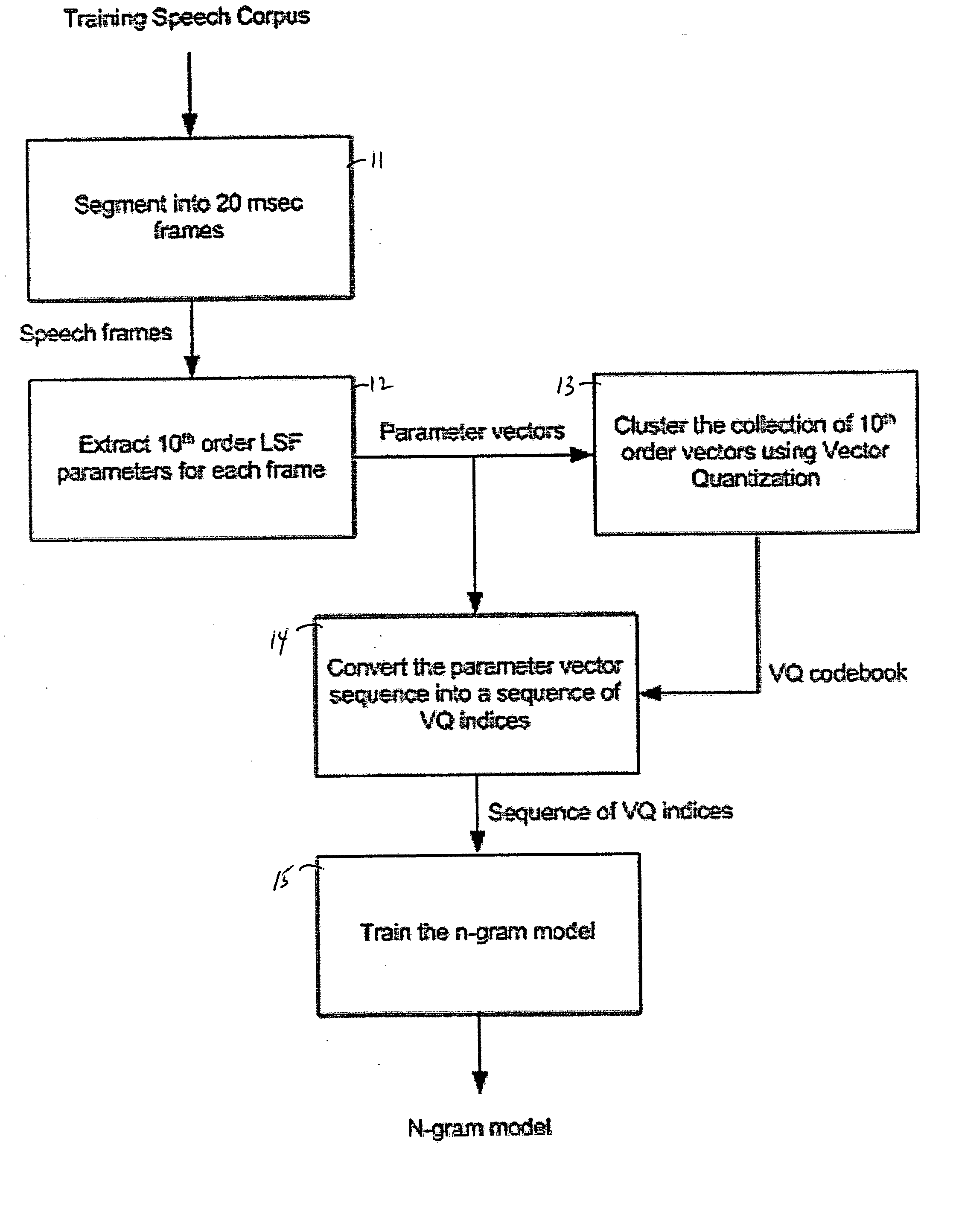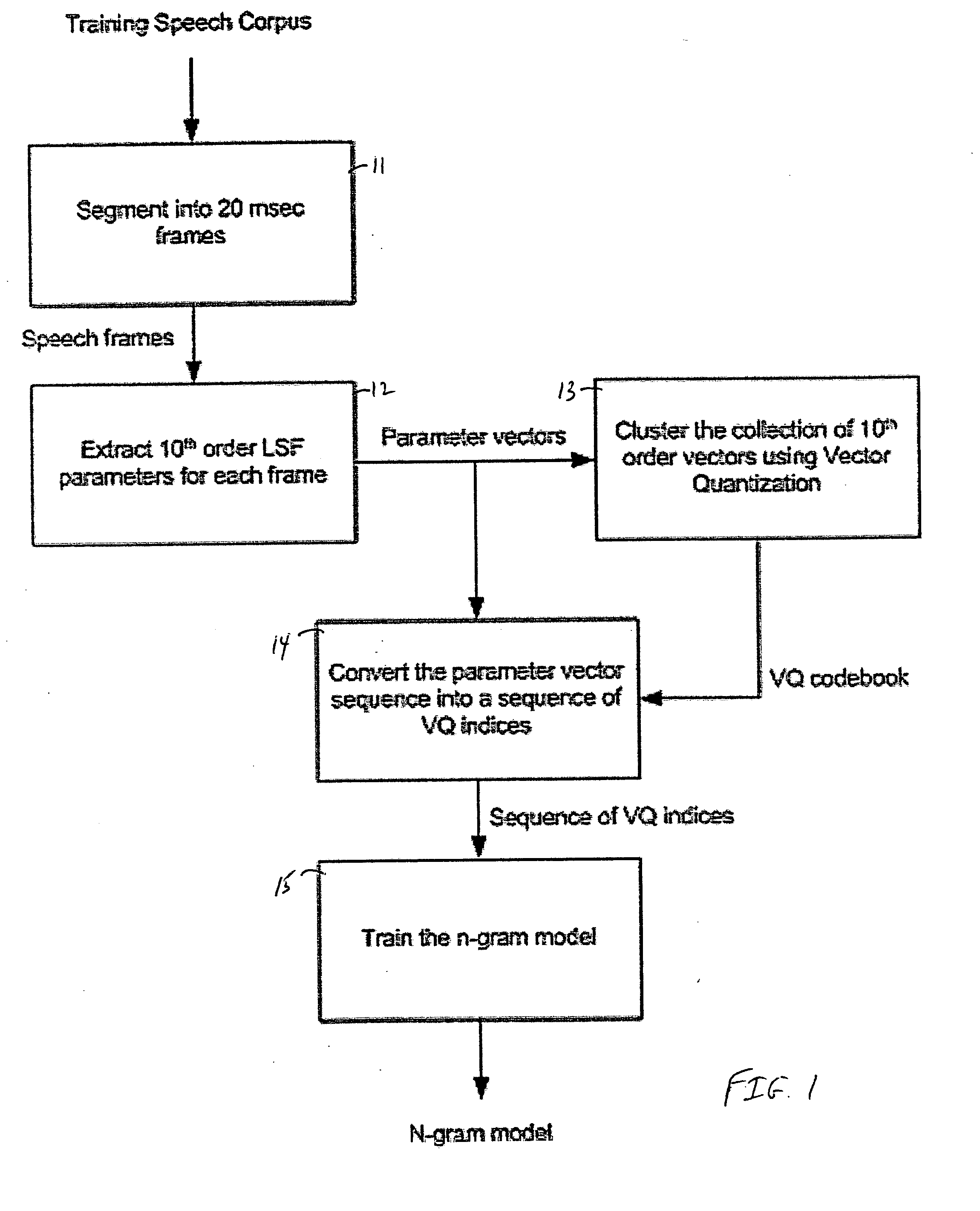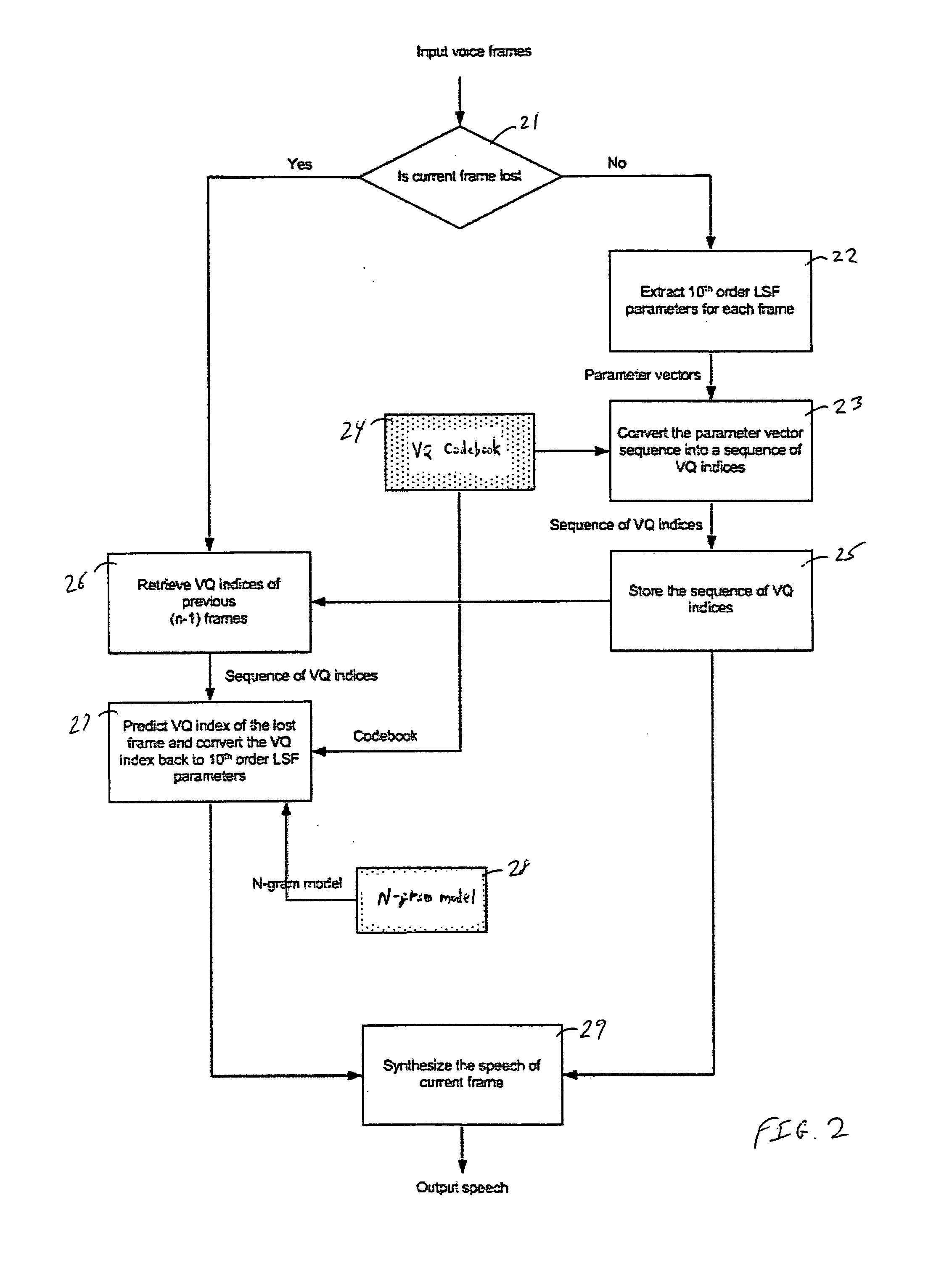Packet loss concealment based on statistical n-gram predictive models for use in voice-over-IP speech transmission
a predictive model and packet loss technology, applied in the field of packet loss concealment method for use in voice-over-ip (internet protocol) speech communication, can solve the problems of ineffective received voice packets, difficult, if not impossible, and different packet transmission delays, and achieve the effect of improving the packet loss concealment algorithm
- Summary
- Abstract
- Description
- Claims
- Application Information
AI Technical Summary
Benefits of technology
Problems solved by technology
Method used
Image
Examples
Embodiment Construction
[0014]FIG. 1 shows a flowchart of a method for constructing a set of statistical n-gram models based on a training speech corpus in accordance with an illustrative embodiment of the present invention. The method is advantageously performed in advance of the transmission of any VoIP speech data for which it is desired to use the novel packet loss concealment (PLC) method of the present invention.
[0015] In performing the illustrative training method (i.e., method for constructing the set of statistical n-gram models based on a training speech corpus) of FIG. 1, first, as shown in block 11 of the flowchart, the speech segments extracted from the training speech corpus are segmented into frames, which may, for example, comprise 20 msec (milliseconds) of speech, thereby producing sequences of individual speech frames. Then, as shown in block 12, a set of parameters—illustratively, tenth order line spectral frequency (LSF) parameters—are extracted for each frame and are stored. The train...
PUM
 Login to View More
Login to View More Abstract
Description
Claims
Application Information
 Login to View More
Login to View More - R&D
- Intellectual Property
- Life Sciences
- Materials
- Tech Scout
- Unparalleled Data Quality
- Higher Quality Content
- 60% Fewer Hallucinations
Browse by: Latest US Patents, China's latest patents, Technical Efficacy Thesaurus, Application Domain, Technology Topic, Popular Technical Reports.
© 2025 PatSnap. All rights reserved.Legal|Privacy policy|Modern Slavery Act Transparency Statement|Sitemap|About US| Contact US: help@patsnap.com



